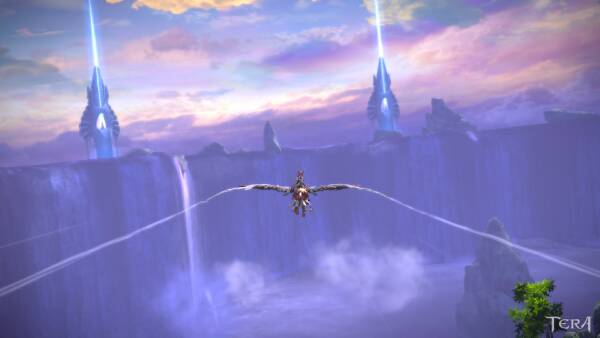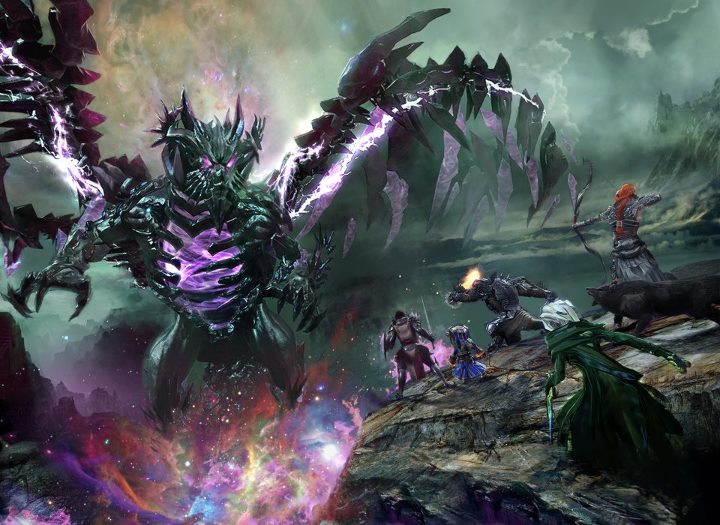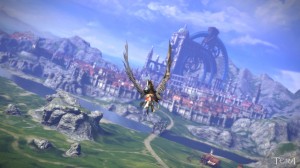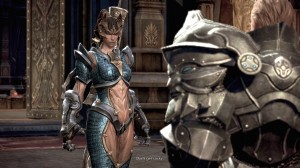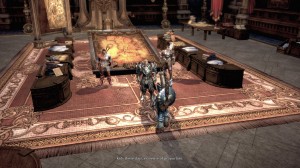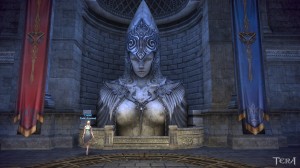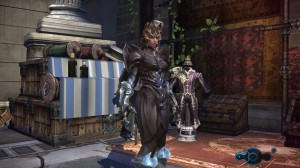I used to be in the habit of turning off General Chat upon first entering an MMO, or at the very least flinging it into a separate tab of the chat window marked ‘DANGER – MINDFIELD!’ to caution me against the volatile minds buried within. I performed the same operation upon first entering Tera, and thankfully the game remembers these settings between alts – because recently I’ve rolled a lot of alts. With limited time to play in past weeks, I’ve primarily taken to rolling a new race and class each time I login, and then blasting through as much of the starter area of the Island of Dawn as time will allow. This enables me to experience some of the flavour of each class, and at the same time inject a few delirious hits of Ding to keep my MMO cravings in check and leave me languorous, before I invariably have to dash off to take care of real life responsibilities.
In the early days of the game the global chat was an unending stream of drivel, as is often the way in MMOs, and it inexorably built up to the usual thundering churning deluge of froth and furore, as torrents of abuse dashed themselves on the unchangeable rocks of personal opinion, forming whirlpools of circular arguments that spun in upon themselves, drawing down to the suffocating depths of their unreason anything foolish enough to drift too close to the topic at its centre.
I diverted the river of global chat into a remote reservoir, which this time I labelled ‘Barrens’, and forgot about it for a good long while.
Nevertheless a lot of an MMO’s community is in its text chat, so I would occasionally flick back to Barrens to see if anything had changed. About a week or so later things started to calm down, and the global chat channel changed from frustrating to fascinating – now a fast but freely flowing expanse of diverse topics. I had rolled on an RP server, as I usually do, with the hope that a slightly more sensible subset of players would migrate there; I was quite surprised, however, at the dramatic change in the channel, and indeed one of the topics under discussion was that very fact. It transpires that the river of drivel had struck a tributary, and the LFG channel was where the rapids of rage now ran. So I left Barrens open by default, and flicked my attention to it every now and again while I repeatedly adventured across the Island of Dawn.
What was fascinating about the channel was that it had become a microcosm of the blogosphere: nearly every general topic that I’ve seen repeatedly touched upon over the past five or so years of blogging was mentioned in this one place, all in the fast forward nature of a back-and-forth conversation between people whose attention was invariably elsewhere. I quickly found myself privately playing Cassandra to any topic raised, knowing full well the future of each discussion, where the disagreements would come from, and the conclusions which would be drawn. It was at the same time amusing and saddening to see nearly all of the discussions follow disturbingly similar paths to those we’ve seen repeated amongst blogs over the years.
That the river of global chat drivel should break its banks and flood the fields of normality is no real surprise; it’s the fact that, upon receding, it left behind such a fertile field of rich discourse. I was tempted to turn the thing into an experiment – to start seeding topics into that fruitful soil, and harvest the bounteous crop of conclusions which grew there. And then I wondered –seeing as no idea in blogging is ever original– whether others had already done the same. Whether developers had already done the same.
An interesting topic perhaps, but whether I could raise the topic of ‘raising topics as an experiment in fast-forward blogging’ as an experiment in fast-forward blogging, without causing a segfault in the universe, I’m as yet undecided.
